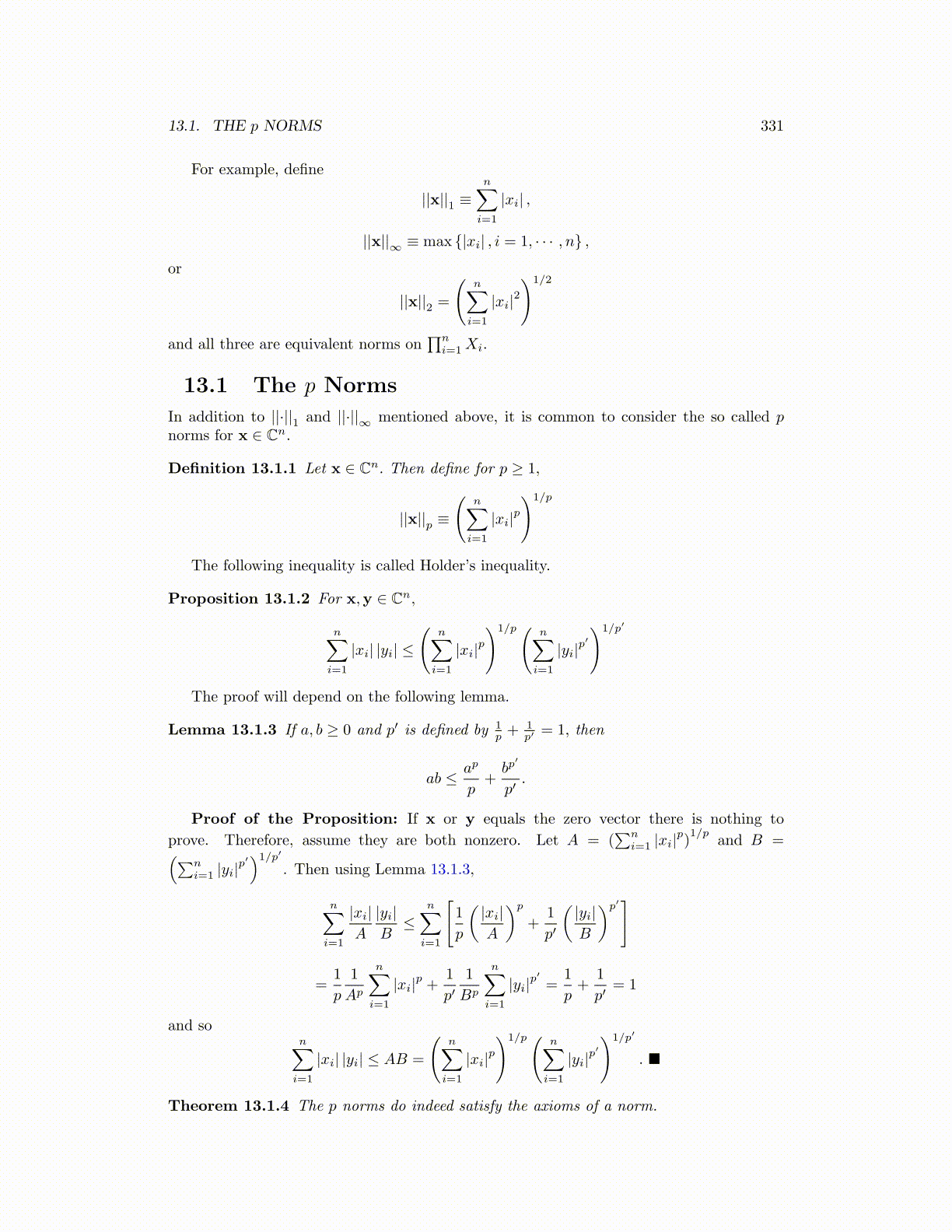
13.1. THE p NORMS 331
For example, define
||x||1 ≡n∑
i=1
|xi| ,
||x||∞ ≡ max {|xi| , i = 1, · · · , n} ,
or
||x||2 =
(n∑
i=1
|xi|2)1/2
and all three are equivalent norms on∏n
i=1Xi.
13.1 The p Norms
In addition to ||·||1 and ||·||∞ mentioned above, it is common to consider the so called pnorms for x ∈ Cn.
Definition 13.1.1 Let x ∈ Cn. Then define for p ≥ 1,
||x||p ≡
(n∑
i=1
|xi|p)1/p
The following inequality is called Holder’s inequality.
Proposition 13.1.2 For x,y ∈ Cn,
n∑i=1
|xi| |yi| ≤
(n∑
i=1
|xi|p)1/p( n∑
i=1
|yi|p′
)1/p′
The proof will depend on the following lemma.
Lemma 13.1.3 If a, b ≥ 0 and p′ is defined by 1p + 1
p′ = 1, then
ab ≤ ap
p+bp
′
p′.
Proof of the Proposition: If x or y equals the zero vector there is nothing to
prove. Therefore, assume they are both nonzero. Let A = (∑n
i=1 |xi|p)1/p
and B =(∑ni=1 |yi|
p′)1/p′
. Then using Lemma 13.1.3,
n∑i=1
|xi|A
|yi|B
≤n∑
i=1
[1
p
(|xi|A
)p
+1
p′
(|yi|B
)p′]
=1
p
1
Ap
n∑i=1
|xi|p +1
p′1
Bp
n∑i=1
|yi|p′=
1
p+
1
p′= 1
and son∑
i=1
|xi| |yi| ≤ AB =
(n∑
i=1
|xi|p)1/p( n∑
i=1
|yi|p′
)1/p′
. ■
Theorem 13.1.4 The p norms do indeed satisfy the axioms of a norm.